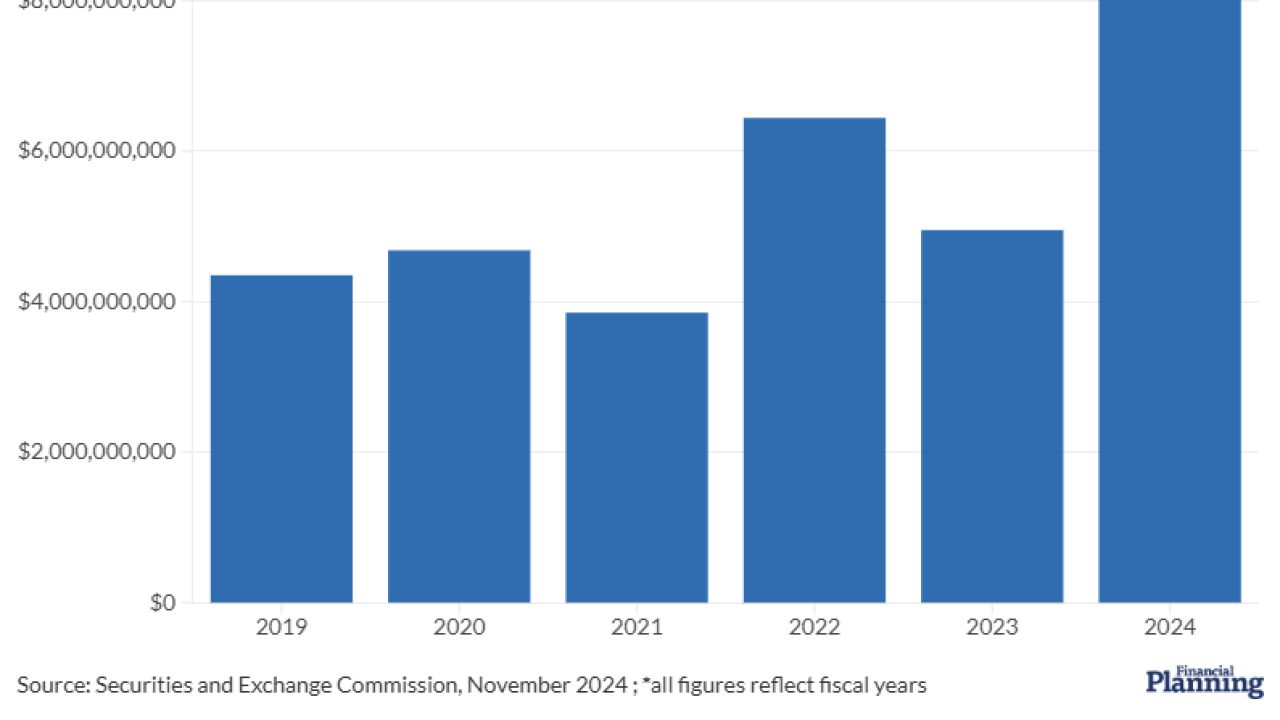For many advisors, bond funds are necessary and effective for diversifying investment portfolios.
High net worth investors can, and frequently do, use bond funds to obtain exposure to bond diversifying asset classes like mortgage-backed securities, high yield, floating rate, international and emerging markets, said Ryan Martin, vice president and portfolio manager at
"It would be inefficient for implementation and portfolio maintenance to hold hundreds of different bonds across multiple asset classes," he said. "By purchasing bond funds, investors can more efficiently manage and adjust a bond portfolio's credit risk and duration."
However, with the
Bonds are still a valuable tool for many
One of the main benefits of bond funds is the ability to reduce overall portfolio volatility, especially when compared to stock funds, said Evan Luongo, financial advisor and founder of
READ MORE:
Bond funds continue to be crucial for maintaining portfolio stability, particularly for clients who need cash flow in the short term, said Mark Stancato, founder and lead advisor at
"By adhering to modern portfolio theory principles, high-quality bonds can mitigate volatility due to their low or negative correlation with stocks," he said.
READ MORE:
High-quality bonds are a source of income, returns and diversification against riskier allocations like equities and downside protection, said Pramod Atluri, fixed income portfolio manager at
"Today, after a historic resetting in yields, bonds offer higher return potential with stronger diversification benefits," he said.
How tariffs affect bond funds
As for recent tariff headlines, Luongo said bond funds "held up well and proved their worth in helping smooth out the bumps."
"I do not believe events like tariffs should fundamentally change anyone's view on the importance of bonds in a globally diversified portfolio," he said. "If you are someone who struggles with the inevitable ups and downs of the market, bonds can help make the ride more tolerable. And it is not just about tariffs. Whether it is tariffs today or something entirely different tomorrow, market surprises are constant."
Given that the tariff risk will equate to higher inflation, Steven Conners, founder and president of
"Prior to this year, there was favorable progress on the underlying inflation trends," he said. "But with an ongoing trade war, with the market waiting in suspense for the next headline … I would prefer to be in treasury bills to protect the principal and obtain a net positive real rate of return for equity portfolios."
Looking for bond alternatives
With interest rate volatility and the risk of negative real returns in traditional bond funds, advisors may be looking for alternatives. Nathan Sebesta, owner of
"These vehicles offer downside protection, tax advantages and competitive yield potential," he said. "While not a fit for every situation, they can provide the steady, predictable income and principal preservation that many investors seek from bonds, without the interest rate sensitivity."
When Thomas P. Leinwol, managing partner and financial planner at
While bond funds continue to offer the advantages they have always provided — including diversification, professional management, liquidity, a consistent income stream and access to various bond markets that may otherwise be inaccessible to certain investors — Leinwol said "the disadvantages of investing in bond funds can be significant."
"Bond funds generally decline in value when interest rates rise, leading to substantial losses for many investors in balanced portfolios during 2023 when equities were also down," he said. "Unlike individual bonds, which return the principal at maturity, bond funds have no fixed maturity and do not guarantee the return of the principal. Furthermore, the fees and expenses associated with bond funds can considerably impact returns; management fees can erode gains, especially in low-yield environments."
While bond funds do have a place in portfolios, Jason DeLorenzo, owner and principal at
"Bonds are their own asset and have closer relationships to the dollar than they do stocks. If there's a liquidity problem, bonds and stocks go down in unison," he said. So they have a place, but not as an equity hedge."
How to select the right bond fund
For those who are ready to jump into bond funds, the details of which to choose matter a great deal. Although recent tariff announcements have introduced some uncertainty, Stancato said his approach to selecting bond funds remains unchanged.
"This approach involves opting for shorter-duration funds, including municipal bonds for high earners and employing active management where needed," he said. "We assess bond funds based on their cost efficiency and level of diversification, prioritizing those with low expense ratios and extensive exposure across U.S. treasuries, corporate bonds, high-yield options and international markets. A solid bond fund proves its worth by holding the line when the rest of the portfolio is under fire."
It is important to know what kind of bond fund is being used, said Luongo, as "not all bond funds are created equal."
"A fund that appears to be low risk on the surface may actually carry higher risk if it includes a significant portion of high-yield bonds or has a longer duration," he said. "If the goal is stability, you want a fund made up of high-quality, shorter-duration bonds. Otherwise, it may not provide the steadying effect you are counting on when the stock market stumbles."
Scroll down the slideshow below for the 10 best-performing and 10 worst-performing bond funds in the U.S., based on their three-year annualized return through the end of March 2025. All data is from Morningstar Direct.




























